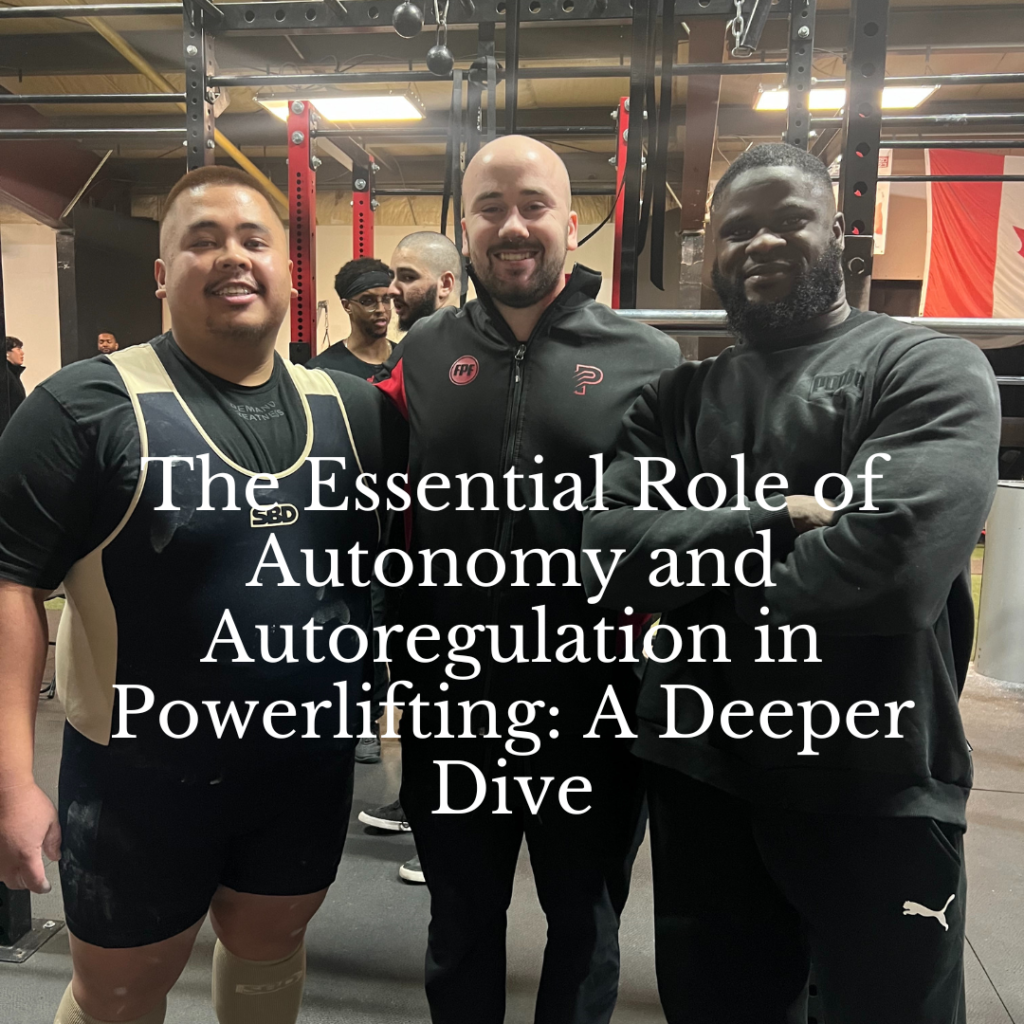
when embarking on a powerlifting journey, the relationship between coach and athlete is pivotal. This bond transcends the conventional trainer-client dynamic, embedding itself deeply within the realms of autonomy and autoregulation. These two principles not only shape the foundation of an effective coaching strategy but are also crucial for athletes aiming to maximize their performance, especially in powerlifting.
Understanding Autonomy and Autoregulation
Before delving into their importance, let’s clarify what these terms mean within this context. Autonomy refers to the right or condition of self-governance. In the coaching sphere, this translates to empowering athletes to make decisions that align with their goals and training needs. Autoregulation, on the other hand, is an adaptive process that allows an individual to adjust their training response based on internal and external stimuli. It is about fine-tuning one’s training approach in real-time, based on how they feel and perform during sessions.
Why Do Autonomy and Autoregulation Matter?
Enhanced Engagement and Performance
The presence of autonomy in an athlete’s training regimen fosters a deeper involvement in their journey towards their goals. When athletes feel empowered to make decisions, their engagement levels soar, leading to improved performance outcomes. Coaches play a vital role here, but the ultimate success hinges on the athlete’s willingness to provide consistent feedback and actively participate in the coaching process.
Mastery of Autoregulation
Autoregulation introduces a layer of flexibility and adaptability to training. For instance, if a powerlifter plans to lift a specific weight but realizes they’re not at their best physically, autoregulation allows them to adjust the intensity accordingly. This skill is invaluable, as it aids in preventing injuries and burnout. A coach’s guidance is crucial in developing this framework, but the athlete must be adept at listening to their body and making informed decisions.
The Pitfalls of Autopilot
Relying solely on a coach or trainer without active involvement can lead to suboptimal results. Coaching is a two-way street that requires effort from both parties. Athletes who passively follow instructions without providing feedback or engaging in the process may see some progress, but they’ll likely fall short of maximizing their potential. Communication and collaboration are key components of a successful coach-athlete relationship.
Navigating the Online Coaching Landscape
In today’s digital age, many powerlifters opt for online coaching. While this offers flexibility, it also means athletes must take on a greater responsibility for autoregulation. Without the physical presence of a coach during training sessions, athletes need to be vigilant about adjusting their program based on how they feel and communicate effectively with their coach.
Conclusion
Viewing a powerlifting coach as a guide rather than a service provider changes the game. Like a teacher who cannot do homework for their students, a coach cannot lift weights on behalf of their athletes. They can, however, offer unwavering support and guidance every step of the way. Embracing autonomy and mastering autoregulation are not just strategies; they’re essential elements that set the stage for reaching new heights in powerlifting and beyond.
Through active participation, open communication, and the ability to adapt, athletes and coaches can forge a partnership that transcends traditional boundaries, paving the way for unparalleled success in the competitive world of powerlifting.
